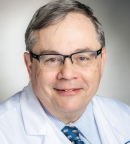
Dan L. Longo, MD, MACP

James O. Armitage, MD, FASCO
In the 1940s, the first drugs proven to cause objective responses in human cancers were developed. Mechlorethamine was discovered as a possible treatment of lymphoid cancers after autopsies on military personnel exposed to mustard gas found destruction of lymphatic tissue and bone marrow. Mechlorethamine was first given to a patient with lymphosarcoma at Yale University, and it led to regression of the cancer. This was done during World War II, but the report in the literature was delayed until 1946.1
Antifolates were discovered after observations that folate deficiency caused megaloblastic anemia. The nuclei of acute lymphocytic leukemia (ALL) cells shared some morphologic features with megaloblastic red cell precursors, leading to the hypothesis that ALL might respond to folate administration. However, administering folate to children with ALL seemed to accelerate the cancer growth. If folates promote proliferation, perhaps antifolates could inhibit it. Yellapragada Subbarow at Lederle Labs made an antifolate, and Sidney Farber, who had come up with the initial unsuccessful idea about folates, gave antifolates (first aminopterin and then methotrexate) to a few children, and the drugs caused some temporary regression in childhood ALL.2
The toxicities of these early drugs were daunting, and responses were generally short-lived. By the 1960s, several other drugs had been discovered, and some courageous investigators and patients were starting to combine these agents in the hope that the combinations might have additive or synergistic antitumor effect and possibly overcome resistance to single drugs. These endeavors were strongly resisted by some very prominent physicians, who thought these studies were unethical. Some notable medical centers refused to develop oncology treatment and training programs or did so reluctantly, on a small scale and late in the process (eg, UT Southwestern, Massachusetts General Hospital, Washington University).
In 1970, the first cure of a solid tumor (ie, Hodgkin lymphoma) with chemotherapy was reported by Vincent DeVita and colleagues from the U.S. National Cancer Institute. And in 1971, the cure of childhood ALL was reported by Donald Pinkel and colleagues from St. Jude Children’s Research Hospital.3
Although not extensively studied, the administration of chemotherapeutic agents at different points in the circadian rhythm might have clinical significance.— DAN L. LONGO, MD, MACP, AND JAMES O. ARMITAGE, MD, FASCO
Tweet this quote
The result of these discoveries was an explosion in research trying to reproduce these results in other cancers. The appearance of cisplatin led to the cure of testicular cancer4 and responses in some patients with other difficult-to-treat malignancies. Drug development also led to an increased cure rate in some cancers when treatments were administered at a time when the disease burden was very low (eg, adjuvant therapy for breast and colon cancers), though many individuals are exposed to toxicity and risk to benefit just a few.5-7 Better understanding of the biology of cancer has led to the discovery of many new agents with specific targets and usually lower toxicity, as well as to the rise of immune therapies.
Rapid Progress in Oncology Drug Discovery
The pace of oncology drug discovery continues to progress rapidly, with 52 new agents approved from 2019 to 2022. The estimated global market for oncology drugs in 2024 was $179 billion (U.S. market: $80–$110 billion).8 The product of this rapid expansion in cancer treatment tools is new and more effective treatments, which have changed the lives of many patients for the better and made the practice of oncology more exciting and rewarding. Our system is profit-driven, but without that, it is very likely that the pace of new drug discovery would be considerably slower.
Our approach rewards the rapid approval of a new drug for a specific indication—preferably in a common cancer—which makes the trials quicker and easier to complete and the market for the drug larger. After a new drug is approved, it is then possible to find the most effective way to administer it and define which other diseases will respond.
Unaddressed Issues in Drug Development
A number of issues that might be important in optimizing the impact of treatment are generally not addressed during drug development. They include the following: (1) studying the impact of the time of day of drug administration; (2) defining the role of the gut microbiome and its manipulation on the effect of different agents; (3) developing rational combinations of new agents, particularly when proprietary interests might make collaboration difficult or impossible; and (4) studying the effect of different genotypes on drug effectiveness, metabolism, etc.
Although not extensively studied, the administration of therapeutic agents at different points in the circadian rhythm might have clinical significance. It is known that there are changes in metabolism, gene expression, mechanisms of DNA repair, hormone levels, and cytokine levels at different times during the day, which might impact the blood levels and action of a number of therapeutic agents.9 Several studies have suggested that the timing of administration of cancer chemotherapeutic agents may impact toxicity. This has been reported to be true for oxaliplatin, cisplatin, doxorubicin, and fluorouracil with leucovorin, among others. The impact of the timing of administration of therapy on anticancer efficacy is less clear. Addressing these issues would seem to be an obvious way to potentially improve treatment outcomes and might make the difference between an agent being approved and utilized or discarded.
Is it necessary for so many versions of immune checkpoint inhibitors directed at PD-1 and PD-L1 to be produced (14 and counting)?— DAN L. LONGO, MD, MACP, AND JAMES O. ARMITAGE, MD, FASCO
Tweet this quote
The importance of the gut microbiome in health and disease is increasingly widely recognized,10 but its impact on cancer chemoimmunotherapy has been less clear. The makeup of the gut microbiome has been shown to impact immunologic responses and to improve the efficacy of some antibodies directed against immune-blocking antigens such as PD-1 and CTLA-4.11 Manipulation of the gut microbiome in concert with immunotherapeutic agents would seem to be an obvious possibility to explore when attempting to improve treatment outcomes.
Issues That May Compromise Treatment Efficacy
As impressive as our drug discovery process has been, a couple of serious issues compromise its efficacy. First, many of the new agents are not the product of innovations in the pharmaceutical industry but are straightforward applications of National Institutes of Health–funded research. The profit motive has some discouraging effects. Is it necessary for so many versions of immune checkpoint inhibitors directed at PD-1 and PD-L1 to be produced (14 and counting)? And why are they priced so high when the companies played no role in their discovery? And in an environment where the multiple choices should lead to competitive pricing, why are they all so costly and often similarly priced from different sources? In essence, the taxpayers are paying for these agents twice—once to promote their discovery and again to take advantage of their use.
Another problematic issue is the proprietary ownership of the new agents. When there are multiple agents that hit the same target, no research is being done on which may be better for the patient, more active and/or less toxic. The companies won’t risk that their agent might be inferior to another, so we have no way to determine the best choice in any particular disease setting.
No mechanism exists for testing rational combinations of agents that are owned by different companies. One might have an interesting hypothesis about how two agents that hit different targets might synergize in a particular clinical setting, but no incentives exist to foster collaboration between two companies to evaluate such hypotheses. Indeed, a downside risk is the emergence of some unexpected toxicity or an unexpected resistance mechanism, serious disincentives to cooperation added to the expense of clinical trial testing.
Finally, the genetic ancestry of patients and the frequency of associated somatic mutations almost certainly can affect the incidence of cancers and also appear to affect the response to anticancer therapies. A recent report on the use of the EGFR tyrosine kinase inhibitor erlotinib for patients with EGFR-mutant lung cancer showed a disproportionate benefit in patients of East Asian and South Asian ancestry.12 Subsequent development of other targeted precision oncology agents seems to particularly have benefited patients of European ancestry. Patients of African ancestry have had the lowest level of targeted biomarkers and the least benefit. Specifically studying patients from different ancestral groups as part of new drug development might improve treatment outcomes and avoid discarding drugs that could benefit patients who are now rarely participants in testing new agents.
Despite the truly remarkable progress in cancer treatment over the past 50 years, and particularly in the past 20 years, it may seem unnecessarily churlish to point out weaknesses in the system. However, we believe that if the issues we have described here were addressed in a systematic way, the result would be even more rapid progress and even more patients benefiting.
DISCLOSURE: Dr. Longo reported no conflicts of interest. Dr.Armitage is on the Board of Directors of Cardiff Oncology and has served as a consultant to Syncromune.
REFERENCES
1. Goodman LS, Wintrobe MM, et al: Nitrogen mustard therapy; use of methyl-bis (beta-chloroethyl) amine hydrochloride and tris (beta-chloroethyl) amine hydrochloride for Hogkin’s disease, lymphosarcoma, leukemia and certain allied and miscellaneous disorders. J Am Med Assoc 132:126-132, 1946.
2. Farber S, Diamond LK: Temporary remissions in acute leukemia in children produced by folic acid antagonist, 4-aminopteroyl-glutamic acid. N Engl J Med 238:787-793, 1948.
3. DeVita VT Jr, Serpick AA, Carbone PP: Combination chemotherapy in the treatment of advanced Hodgkin’s disease. Ann Intern Med 73:881-895, 1970.
4. Pinkel D: Five-year follow-up of ‘total therapy’ of childhood lymphocytic leukemia. JAMA 216:648-652, 1971.
5. Einhorn LH, Donohue J: Cis-diamminedichloroplatinum, vinblastine, and bleomycin combination chemotherapy in disseminated testicular cancer. Ann Intern Med 87:293-298, 1977.
6. Davies C, Goodwin J, Gray R, et al: Relevance of breast cancer hormone receptors and other factors to the efficacy of adjuvant tamoxifen: Patient-level meta-analysis of randomised trials. Lancet 378:771-784, 2011.
7. Moertel CG, Fleming TR, Macdonald JS, et al: Levamisole and fluorouracil for adjuvant therapy of resected colon carcinoma. N Engl J Med 322:352-358, 1990.
8. André T, Boni C, Mounedji-Boudiaf L, et al: Oxaliplatin, fluorouracil, and leucovorin as adjuvant treatment for colon cancer. N Engl J Med 350:2343-2351, 2004.
9. Lee Y: Roles of circadian clocks in cancer pathogenesis and treatment. Exp Mol Med 53:1529-1538, 2021.
10. Lynch SV, Pedersen O: The human intestinal microbiome in health and disease. N Engl J Med 375:2369-2379, 2016.
11. Fernandez E, Wargo JA, Helmink BA: The microbiome and cancer: A translational science review. JAMA 333:2188-2196, 2025.
12. Arora K, Suehnholz SP, Zhang H, et al: Genetic ancestry–based differences in biomarker-based eligibility for precision oncology therapies. JAMA Oncol 11:310-316, 2025.
Dr. Longo is Professor of Medicine at Brigham and Women’s Hospital, Harvard Medical School, Boston. Dr. Armitage is the Joe Shapiro Professor of Medicine at the University of Nebraska and Editor-in-Chief of The ASCO Post.
Disclaimer: This commentary represents the views of the author and may not necessarily reflect the views of ASCO or The ASCO Post.

